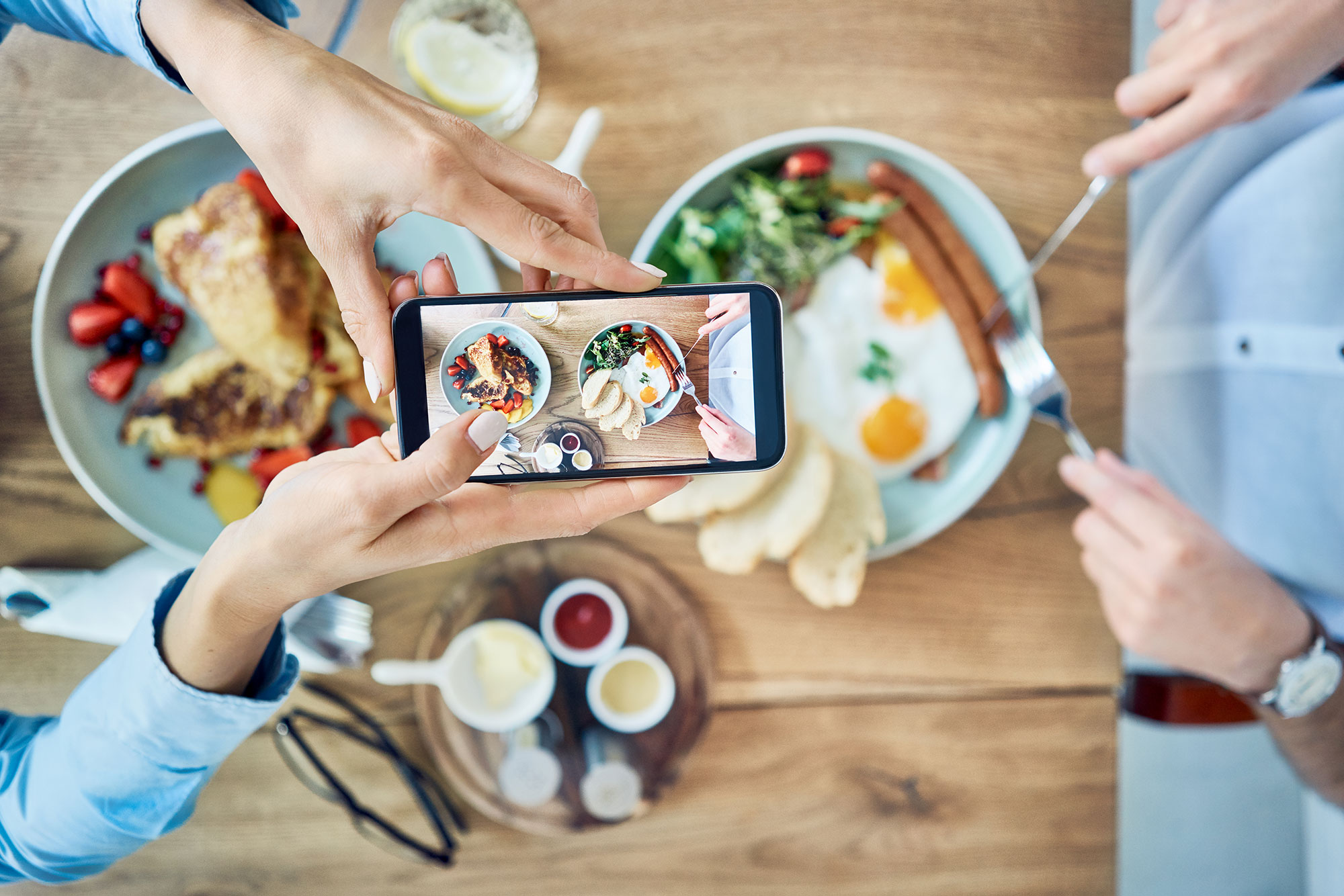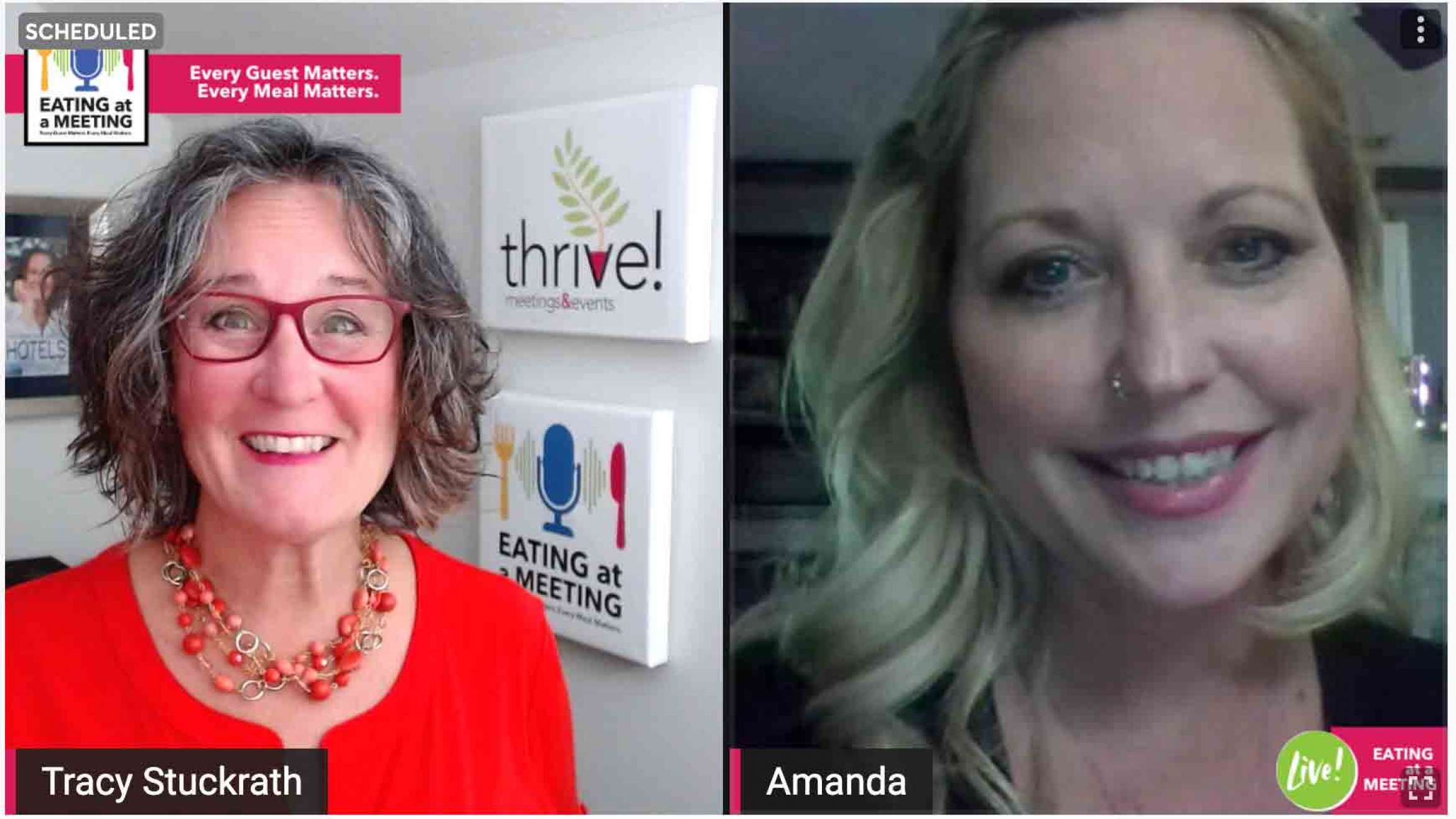Food & Beverage Trends for 2021
Eating at a Meeting Podcast Episode 67

What and how will we be eating in 2021?
Comfort food in shipping containers? Functional and healthy? Ethically, sustainably and contactless?
Join this conversation with Felicia Trujillo, founder of Food Seen, a creative marketing agency specializing in food and beverage, and Mark Cooper, CEO of the IACC, an international association of world-class venues and the bi-annual Meeting Rooms of the Future report.

What do safe, inclusive & sustainable food and beverage experiences look like to you?
Mark: They are considered safe and can be full inclusive when the planner has taken the required time and effort to obtain attendee information.
Felicia: I am not afraid to dine out or consume food outside of the home during covid. When I see a food establishment providing clean surfaces and wearing a mask while preparing food and serving food, I feel totally comfortable dining in or taking food to go. Outside of COVID, I always think it’s important for food establishments to be conscientious of cleanliness by making sure tables are wiped down with clean towels and tableware is properly cleaned, especially utensils and glassware which tend to be the hardest to clean. Also menus. Sticky menus, floors and table are disgusting.
Inclusive experiences is one in which everyone feels safe, happy and welcome – not matter what. This requires a well-trained staff and great service. There is always going to be a difficult customer and you can’t please everyone, but if you can please most, it’s a good start.
Sustainability is such a huge topic. Using cleaning products that are earth friendly, sourcing local products, minimizing food waste, incorporating eco-friendly food items, serveware, etc… are all important components to sustainability. Also taking great care of employees with a quality of life and a positive work environment also feed into sustainability. Keeping up with demand and trends is also important. For a business to sustain, it needs to provide what the consumer wants and that can evolve over time.
Do you have an example of a situation that negatively effected you and/or other individuals or groups’ food and beverage experience?
Mark: When you make a meal 100% vegan, but you do not share with the attendees the reasons for doing it and they in turn do not buy into the reasons.
Felicia: Being in the midst of a pandemic is no excuse for bad service or poorly accommodating customers. Now more than ever making the dining experience safe, fun, welcoming and comfortable is critical. I went to a local bakery to pick up pastries and snacks. I had to stand outside in the hot sun trying to figure out how to order and then wait for my order. I spent a lot of money on croissants and by the time I received my food, I was annoyed. Umbrellas and chairs should have been set up outside to make waiting comfortable and explicit order instructions should have been posted. I felt like the store didn’t even want to be open and didn’t really want customers to come. We are in covid. It’s going to be here for a while. Every business should have immediately made arrangements to make ordering and waiting as positive, fun and easy as possible. Especially when many people are nervous going out anyway. I have seen A LOT of terrible, terrible service in the last 10 months.
What is a best practice you use/or have seen to create safe and inclusive F&B experiences?
Mark: Setting the venue F&B team a challenge to put in place a menu plan where only seasonably available foods and locally sourced foods are used.
Felicia: It can relate to health, ethical, environmental, legal, or social aspects of food and beverage. I watched my husband build a restaurant that beat all sales numbers during covid. They had the luxury of having an enormous patio but that’s not why they were wildly successful. They were wildly successful because the environment was very friendly and welcoming. All staff wore masks and were very helpful, informative and friendly. They provided options to order online or with a server. They had a single team that handled order taking and service, a team to deliver food and a team to buss food – ensuring zero cross contamination. The menu was simplified to accommodate food shortages and manage food costs during uncertain times. The entire experience was positive, welcoming, clean, fun and safe. People of all colors, shapes, sizes, backgrounds, beliefs, and palates sat at those tables and it was wonderful.
What is your favorite food and your favorite drink?
Mark: I feel the most fulfilled and not over eaten when I enjoy a really nice continental style breakfast with a nice balance between fresh fruit and then some of the more sinful breads and pastries in equal measure 🙂
Felicia: I LOVE vegetables so much. It’s my favorite food group. Any way, shape or form in which they are prepared, I will eat them. My favorite genre of food is Asian, Mediterranean and Middle Eastern. I love bright, acidic and clean flavor profiles.
For drinks… I love more herbaceous drinks. Gin is my favorite liquor. A dirty martini is my favorite cocktail and this sounds gross… but I love Aloe Juice without sugar added. It is hydrating and helps keep my gut health in check. With that said, I also like the drink called “Gut Shot” which is basically pickle juice.
Links:
Connect with Mark — Website | Facebook | Instagram | Twitter | LinkedIn
Connect with Felicia — Website | Facebook | Instagram | LinkedIn
Check out other featured guests on the Eating at a Meeting podcast






